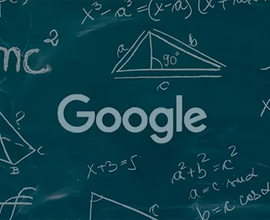July 2023 SEO Industry Updates
- Industry News
- By multiple authors
- 7 minutes read
Check out the major updates from Google and in the search industry during July 2023. Here are the things you need to know from the Conductor Customer Success team.
Introducing INP to Core Web Vitals
By Ryan Maloney
The what:
Interaction to Next Paint (INP) will replace First Input Delay (FID) as a Core Web Vitals metric starting in March 2024, Google announced at Google I/O.
The why:
SEOs have focused a lot of time on Core Web Vitals and the FID score, for better or worse. Now those same SEOs will likely shift their focus from FID to INP.
INP, similar to FID, will focus on the responsiveness of your pages. This shows Google’s continued focus on ensuring pages are a good experience for users.
For everyone:
- Monitor your page and site speed and ensure you prioritize pages with a low INP score.
- Use PageSpeed Insights, Lighthouse Monitoring, or Google Search Console to better understand how your pages are loading.
- Work internally with your development teams to fix the pages that are loading slowly and work into the process of making sure your pages load fast when they are published.
- Download the Conductor for Chrome extension to monitor how your page is performing from a page speed perspective.
For Conductor customers:
- ContentKing has supported monitoring Core Web Vitals for some time but recently introduced INP metrics to the platform.
- Monitor your pages using ContentKing and Lighthouse Monitoring to understand how your pages are performing.
- Create Segments of pages that load slowly or have a low INP to understand what you can do to fix these pages.
- Create a Page Group in Conductor of pages with fast INP and slow INP to monitor the results and also prove what happens when you increase your page speed.
- Download the Conductor for Chrome extension and the ContentKing Chrome Extension so you can monitor how your page is performing from a page speed perspective.
Mastering Google Discover: Regaining Lost Traffic
By Carly Piekos
The what:
Google Discover, a powerful organic feature, operates based on user interests and habits, delivering content that aligns with their preferences.
There is no documentation on what signals Google uses to deliver content based on a user’s interests, but SEOs can identify ways to get and maintain traffic using Google Discover.
The why:
To be included in Discover, your content should be indexed and adhere to Google's content guidelines. While evergreen content is favored, fresh and relevant topics also catch the system's attention.
Here are some signals that we believe Google uses to help rank content on Discover. First and foremost, articles must concentrate on a single topic and present it effectively. The heading outline plays a significant role, as it provides a forest view of the article's structure. Headings should be clear and informative enough to convey the topic without requiring the reader to delve into individual sentences. Additionally, you need to strategize your content to follow a logical flow, similar to a captivating story with well-defined chapters.
Google has outlined best practices to enhance your Discover visibility:
- Compelling Page Titles: Create page titles that capture the essence of your content, drawing readers in with their relevance and appeal.
- High-Quality Images: Incorporate engaging, high-quality images that complement your content and enhance its visual appeal.
- Timeliness, Storytelling, and Unique Insights: Aim to provide content that is timely and relevant to current interests, narrates a story effectively, or offers distinctive insights into the chosen topic.
By prioritizing topic-centric writing, ensuring high-quality content, incorporating relevant images, and staying up-to-date with current trends, you can greatly improve your chances of driving significant traffic through Google Discover.
For everyone:
- Use Google Search Console to monitor your performance of Discover.
- You can understand the Performance reports of this area by monitoring your clicks, impressions, and CTR for the content that has appeared here.
- Evaluate how your content is doing, how much traffic you are receiving, and continue to monitor overtime.
- Ensure you are creating content that matches the user’s intent and satisfies their needs.
For Conductor customers:
- Use Explorer & Content Guidance to do keyword and competitive research.
- Talk to your Conductor team to get access to our new feature currently in Alpha called Writing Assistant which is powered through AI and can help you better understand what to include in your content.
- Understand the customer’s voice before creating content and ensure you are using the right keywords in the right places.
- Monitor how your content is performing organically and identify if there are any content gaps on your website where you need to improve and create content.
Read more about this:
- https://www.searchenginejournal.com/google-discover-traffic/491751/
Google expands Bard to more countries, more languages, and adds new features
By Kerri Kirkhuff
The what:
With its most significant expansion to date, Google is rolling out Bard to more countries, in more languages, and adding a bunch of new features.
The why:
Bard has proven to be a super useful generative AI tool, amongst others, like ChatGPT and Bing Chat. These new features will add to those capabilities, and the wider availability will allow more users to use these features.
There are a lot of new and exciting features recently released, like the ability to pin conversations with Bard, share answers with others, use images in your prompts, or even listen to responses from Bard.
For everyone:
- Continue to monitor the evolution of Bard and experiment with Search Generative Experience to understand what the impacts could be to your site and content.
- Run benchmark reports of your content today to get a holistic view of your performance before SGE is released.
For Conductor customers:
- Read more about how to create AI-generated content and the best practices for doing so.
- Monitor your top-performing content and keywords in Conductor to better understand where you consistently rank before Bard is officially released.
Read more about this:
- https://searchengineland.com/google-expands-bard-to-more-countries-more-languages-and-adds-new-features-429339
Why brands should prioritize bottom of the funnel keywords in SEO
By Larissa Suguitan
The what:
Content strategists often hear that they should create a balanced mix of content across the marketing funnel. However, focusing on bottom-of-funnel keywords can lead to better results and higher returns when resources are limited.
The why:
Focusing on bottom-of-funnel keywords in SEO is crucial for getting the most out of your efforts. By targeting keywords that lead to more sales, understanding what your audience wants, and tailoring content accordingly, you can attract people ready to buy, resulting in more conversions for your business.
Search intent is an important part of creating content, as you want to ensure the content you are writing targets the right audience.
Top-of-the-funnel keywords might be more attractive in terms of search volume, but they are also a lot more competitive and vague, which could either bring in unqualified traffic or make it harder to rank. By focusing on keywords that are longer-tail or bottom of the funnel, you can ensure the users who type these queries are looking for your content, and it will be a lot easier for you to rank for these phrases when producing high-quality content.
For everyone:
- Identify how your content is performing and what areas you can create content in when developing a content strategy.
- When creating content, remember that search intent matters and ensure your content matches what users are looking for.
For Conductor customers:
- Use Explorer to filter to keywords by Buyer’s Journey or long-tail keywords to identify keywords to target in your content.
- When creating content, monitor these keywords and new pages in Groups to identify how they are performing and if you need to make any changes.
- Continue to run performance reporting on this content to identify top-performing pages, underperforming content, and potential content gaps.
Read more about this:
- https://www.searchenginejournal.com/bottom-of-funnel-keywords-seo/489814/










